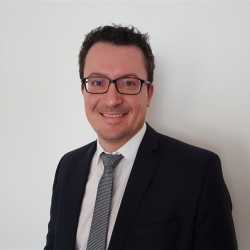| Wednesday, November 17, 2021 | |
Smart Mobility |
|
| 16:00 | Welcome note |
| 16:10 | A revolution in Smart Factory is coming – driven by Autonomous, SW-defined, Service-oriented, Fully Connected Cars. Are you ready? |
Lawrence Vivolo, Sr. Business Development Manager, Semiconductor & Automotive, Dell Technologies A revolution in Smart Factory is coming – driven by Autonomous, SW-defined, Service-oriented, Fully Connected Cars. Are you ready?
 Abstract Biography |
|
| 16:30 | Automotive Reliability – Contamination Management and Maturity of the Ecosystems |
Antoine Amade, VP of sales for the Microcontamination Control division in EMEA/NA and Head of the Entegris automotive program, Entegris S.A.S. Automotive Reliability – Contamination Management and Maturity of the Ecosystems
 Abstract Biography |
|
| 16:50 | Advanced silicon carbide single wafer wet chemical etching and polishing at ambient temperature |
Holger Kühnlein, Senior Vice President Technology & Innovation, RENA Technologies GmbH Advanced silicon carbide single wafer wet chemical etching and polishing at ambient temperature
 Abstract Biography |
|
| 17:10 | Seeing Beyond the Visible: The Short-Wave Infrared Revolution |
Ziv Livne, Chief Business Officer, TriEye Seeing Beyond the Visible: The Short-Wave Infrared Revolution
 Abstract Biography |
|